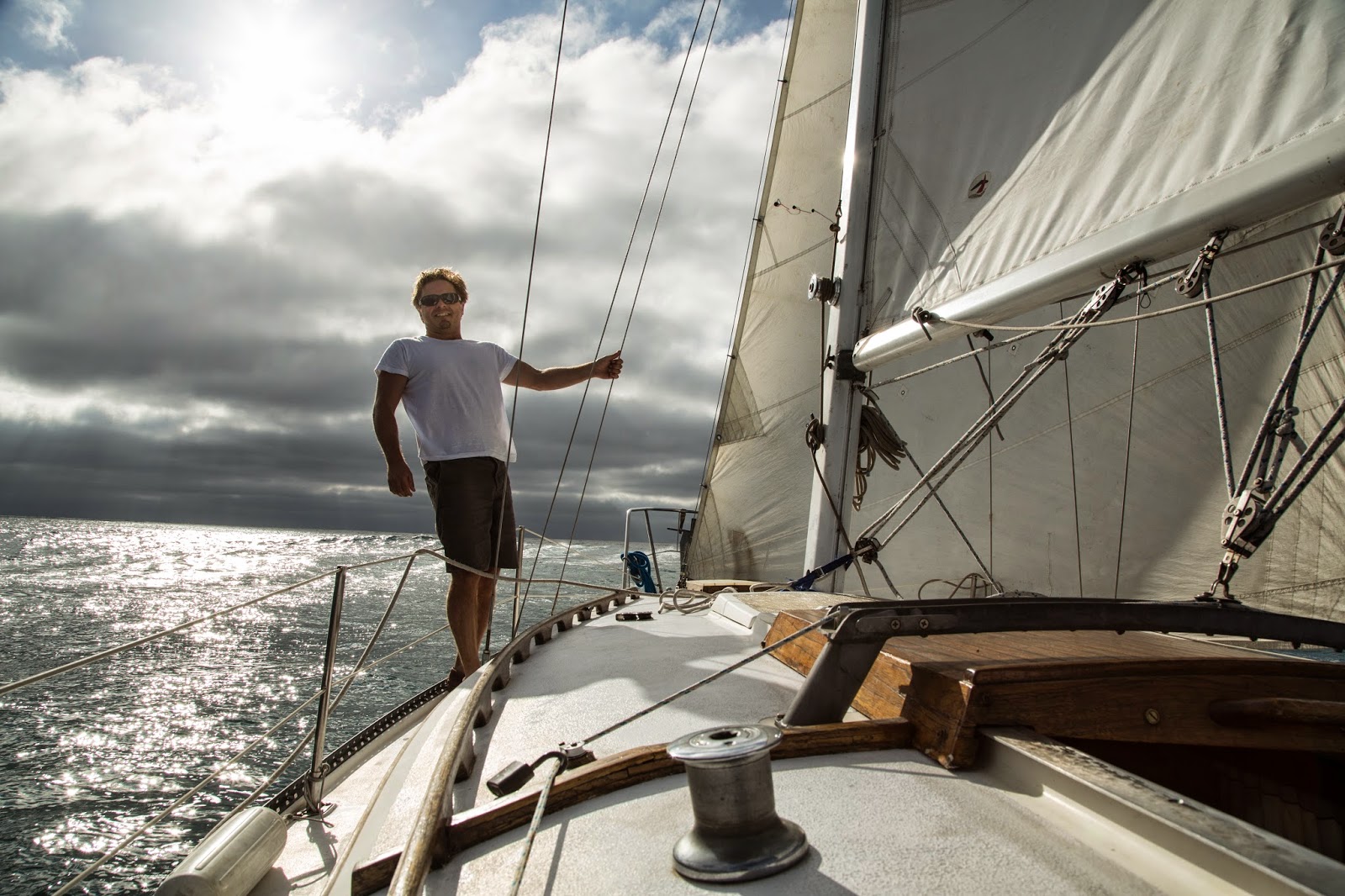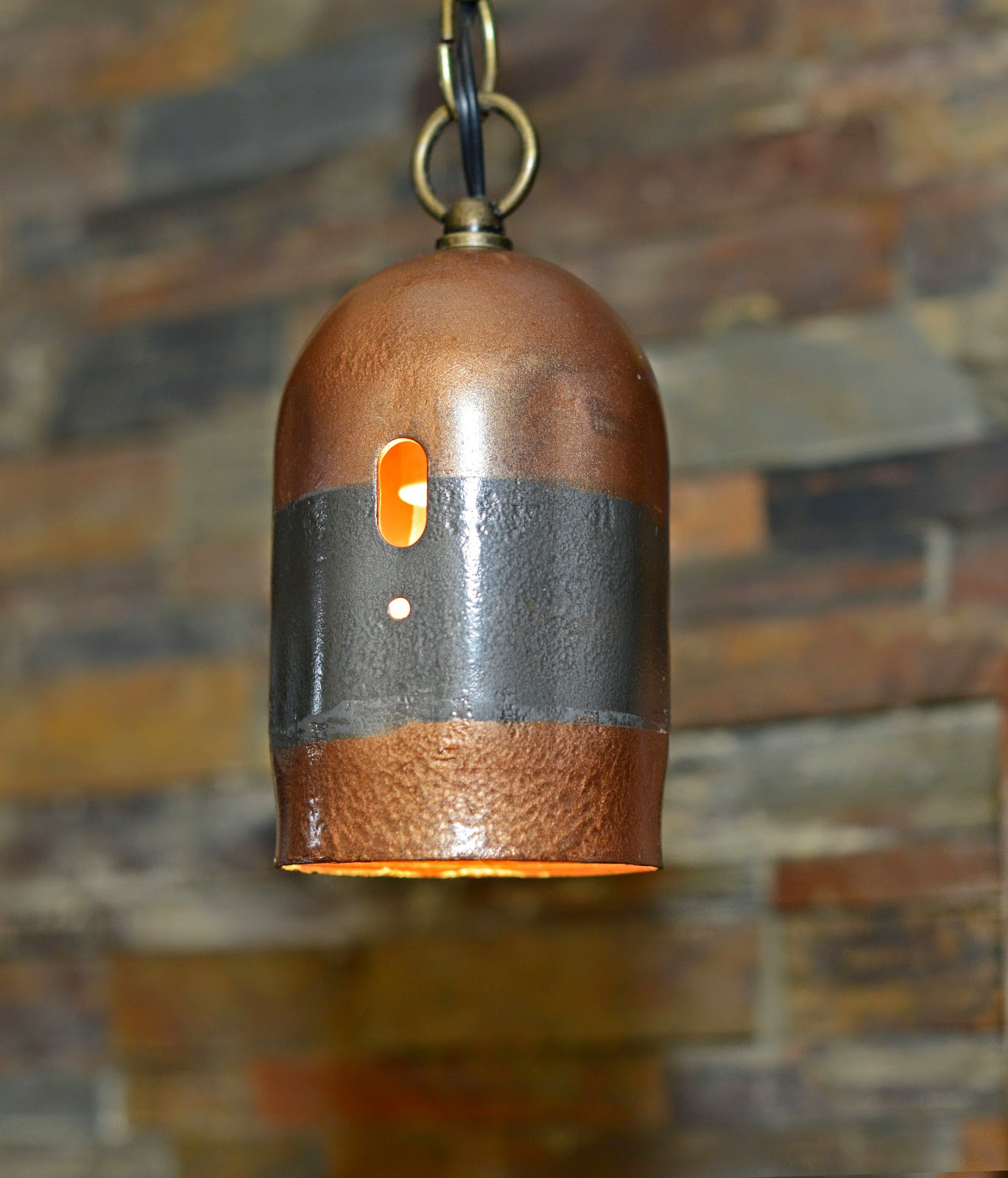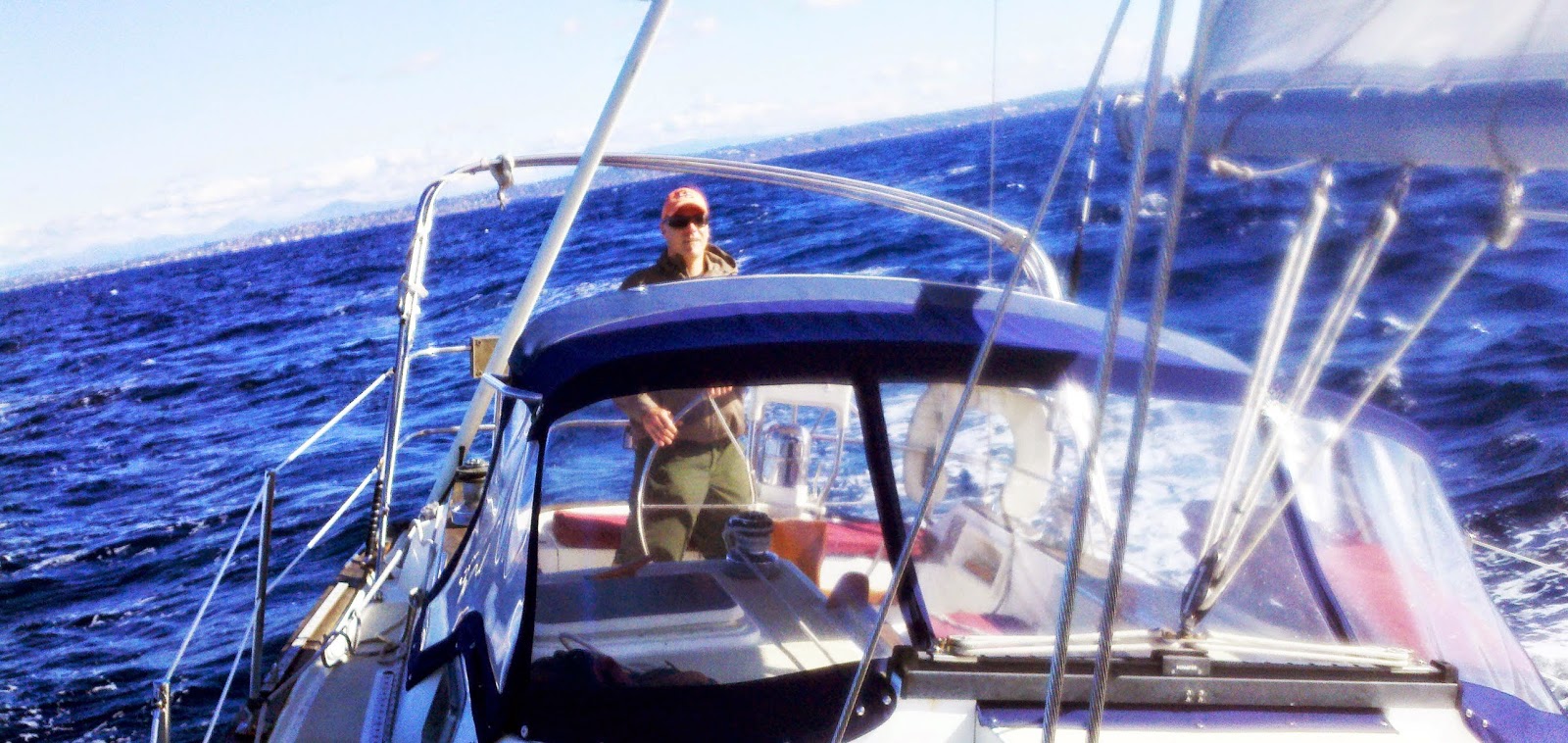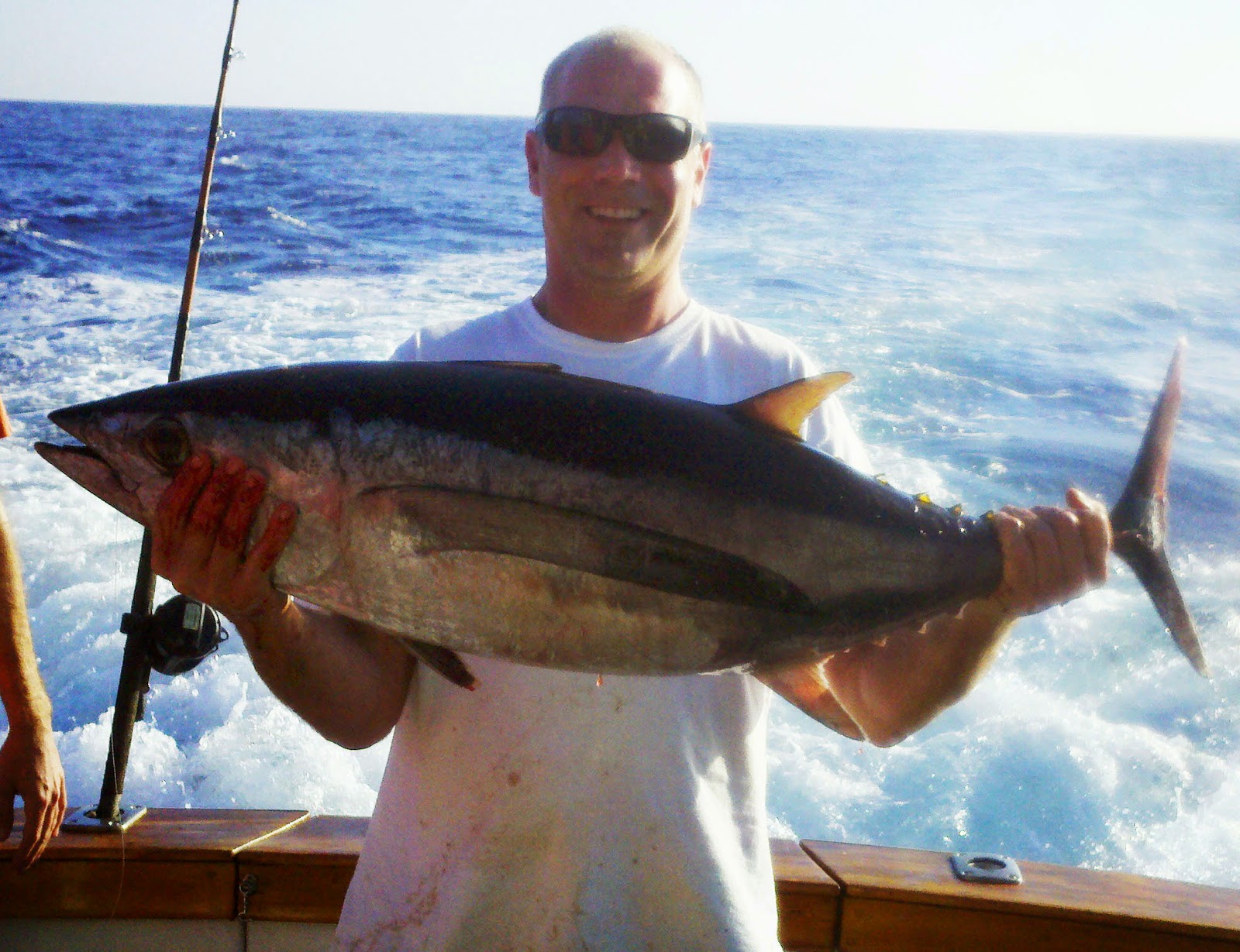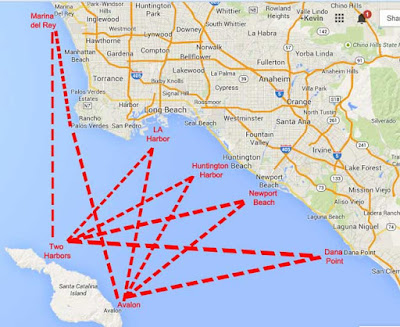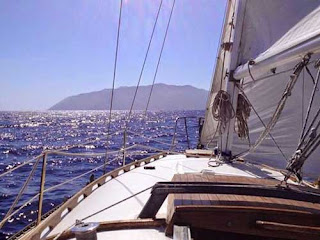updated: 8/25/2016
Ok, you've decided you're going to learn to fly a drone from the deck of your boat.
Good call!
Combining a boat and a drone is an exciting endeavor. You can take photos of your boat from angles that would previously require a helicopter. You can also capture outrageously scenic video of the surrounding area.
However, you want to do this without bothering others and without damaging your drone. In this article, I will walk you through the process of learning how to fly a drone from a boat.
Here is video of a practice launch from my sailboat.
(video above is compressed to fit on page, the raw video footage has high resolution: 1080x720)
How to fly a drone from your boat.
Practice flying your boat drone while stationary in calm waters.
Drop anchor in a quiet cove that is not in a restricted air space. Choose a light wind day. Wind is an issue. Practice on a day when winds are 5 mph or less. You don't want to challenge your drone with high winds at the beginning of your training. Each model of drone will be able to handle wind differently. Lower end models tend to get thrown around more.
What's the best drone for sailing?
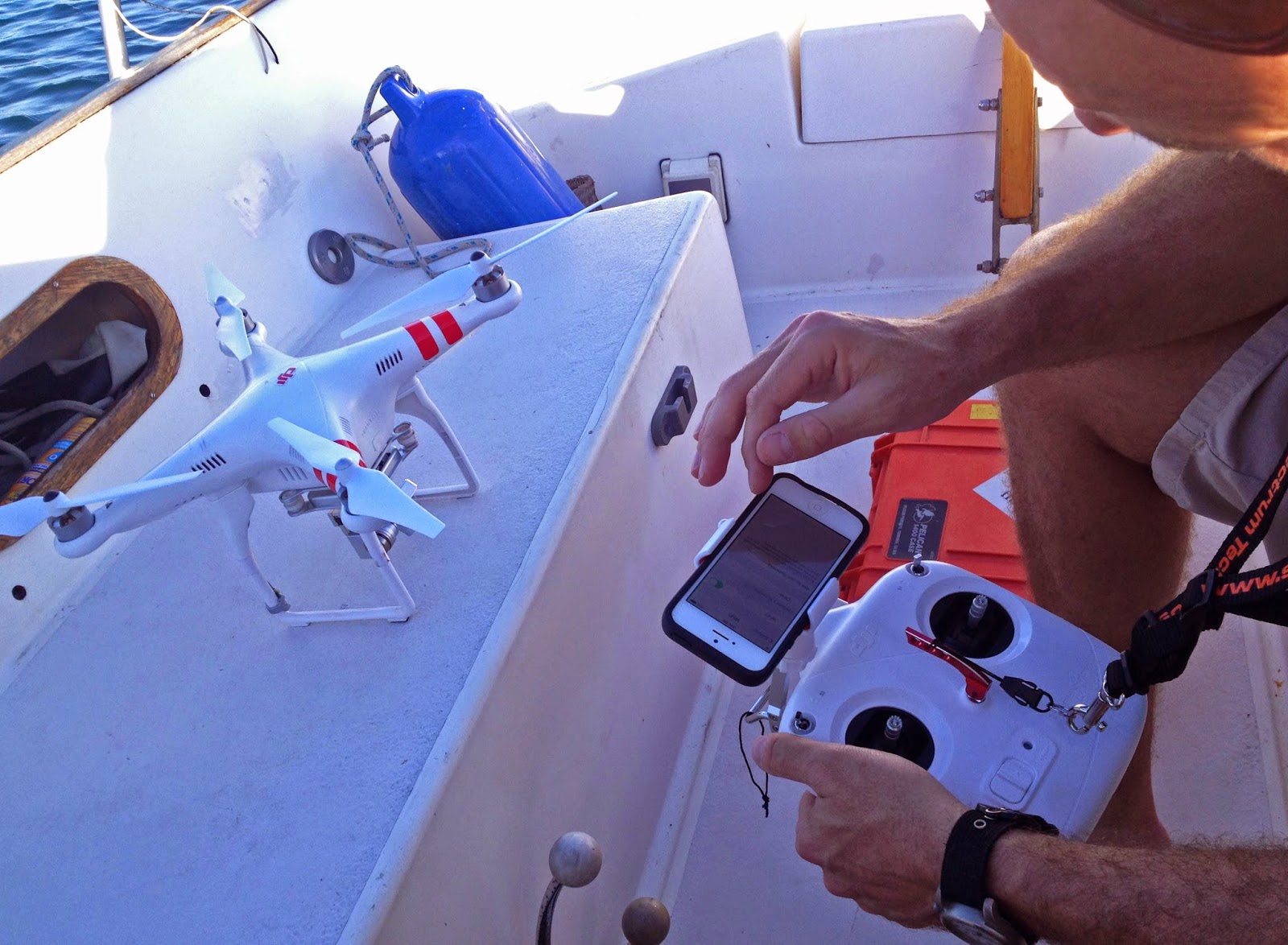 |
| Ryan launching the DJI phantom 2 Vision + from the deck of my boat. |
Here, we are using the
DJI phantom 2 Vision +.
That was our first drone. I've since upgraded to a newer model. But I will always have love for the 2+.
I just returned from a trip to the Columbia River and got excellent drone video with a more recent model, the DJI Phantom 3 Advanced Quadcopter Drone
The Phantom 4 is already out, but I've heard they are still working out the bugs. Most people have no issue with Phantom 3, plus its much cheaper...
The phantom may be too nice of a drone to be learning to pilot from a boat. You run the risk of losing a high end model in the ocean.
That said, the advantage to practicing with this higher end drone is 2-fold. First of all, it takes incredible photos/video. Secondly, it has GPS based navigation, so it can hold a steady position. This makes for easy flying.
But do yourself a favor, don't fly your drone from a boat in heavy weather - until you've got the hang of it..
 |
| holding a locked GPS position |
Is it legal to fly a drone in public waters?
Okay, your boat is on anchor and the wind is light. You're ready to launch the drone from your boat.
As mentioned, first make sure you are not in restricted air space. Often, waterways and coastlines are near flight paths for commercial airplanes or for coast guard, military or other officialdom. You do not want to bother these people or risk an incident with real aircraft.
I have found that this page is an easy way to determine the location of No Fly Zones near your location. Additionally, you can check this FAA link to keep up with the latest federal rules for drones.
Even if you are not in a restricted air space, you want to be conscious of not bothering people. People go to the water to relax. Some people enjoy watching drones, but many people do not. Don't be annoying with your drone. Fly away from people and don't creep people out by flying near them with the drone camera pointing at them. Common sense and human decency go a long way with this activity.
Or, if the sailing drone is fitted with some homemade water landing gear, you can scoop the drone from the water before its electronics are fried (skip to last 10 seconds of this video link to see the homemade landing gear in action).
First try to remove as many of these obstructions as possible. Then, launch and retrieve from the part of the boat that is furthest from these obstructions.
And, most importantly, keep a giant fishing net nearby. If the drone is just out of hands reach and the wind picks up. It's nice to reach for it with the net.
Here, I've cleared all halyards, lines and fishing poles from my cockpit to allow for an unobstructed landing space for my sailboat drone.
The only remaining obstruction was the backstay.
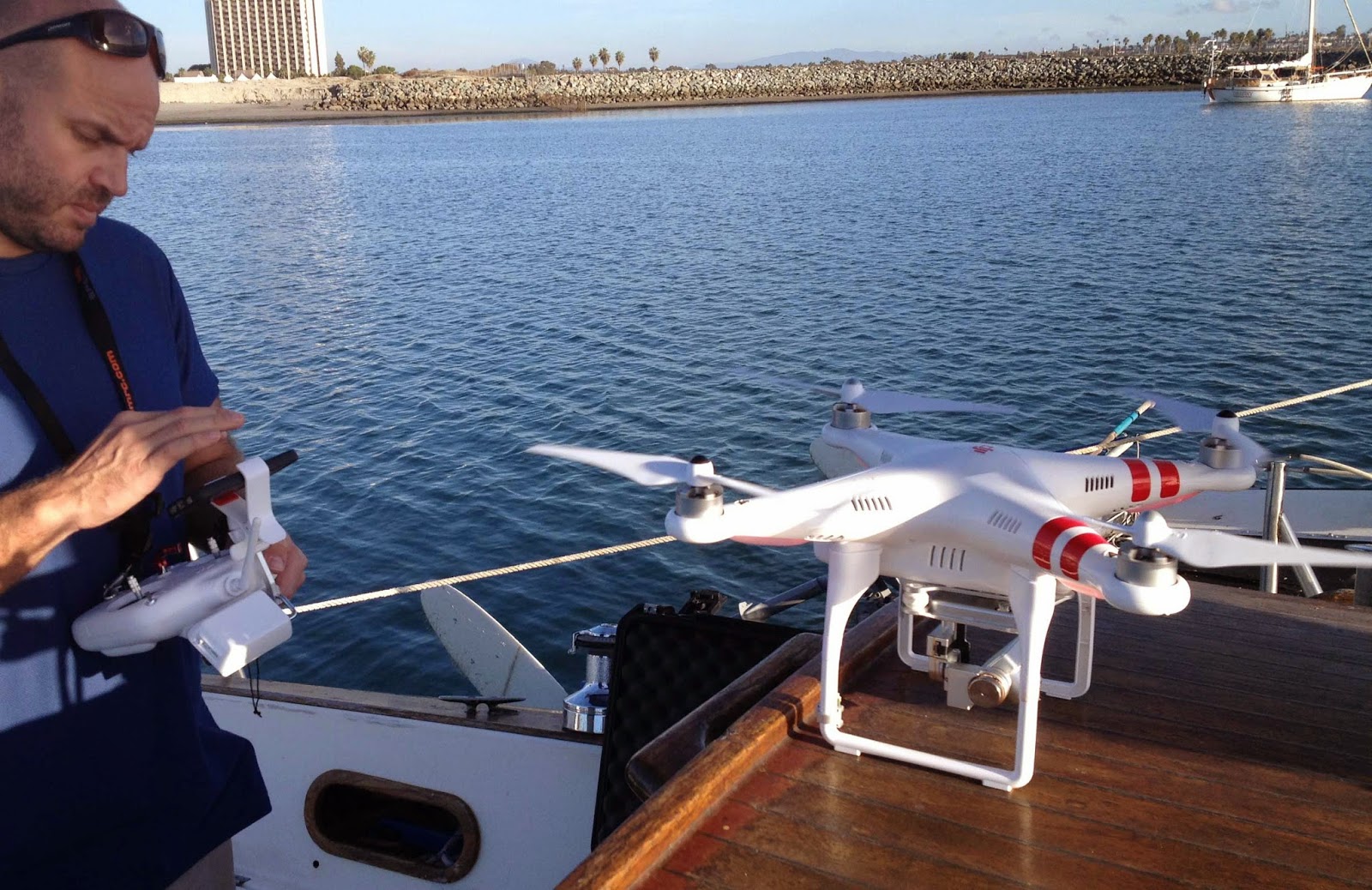 |
| verifying the connection between drone and controller before launch |
Make sure all batteries are topped off and the link between drone and controller is set. If you lose connection with the drone over water, it will probably splash down in the sea.
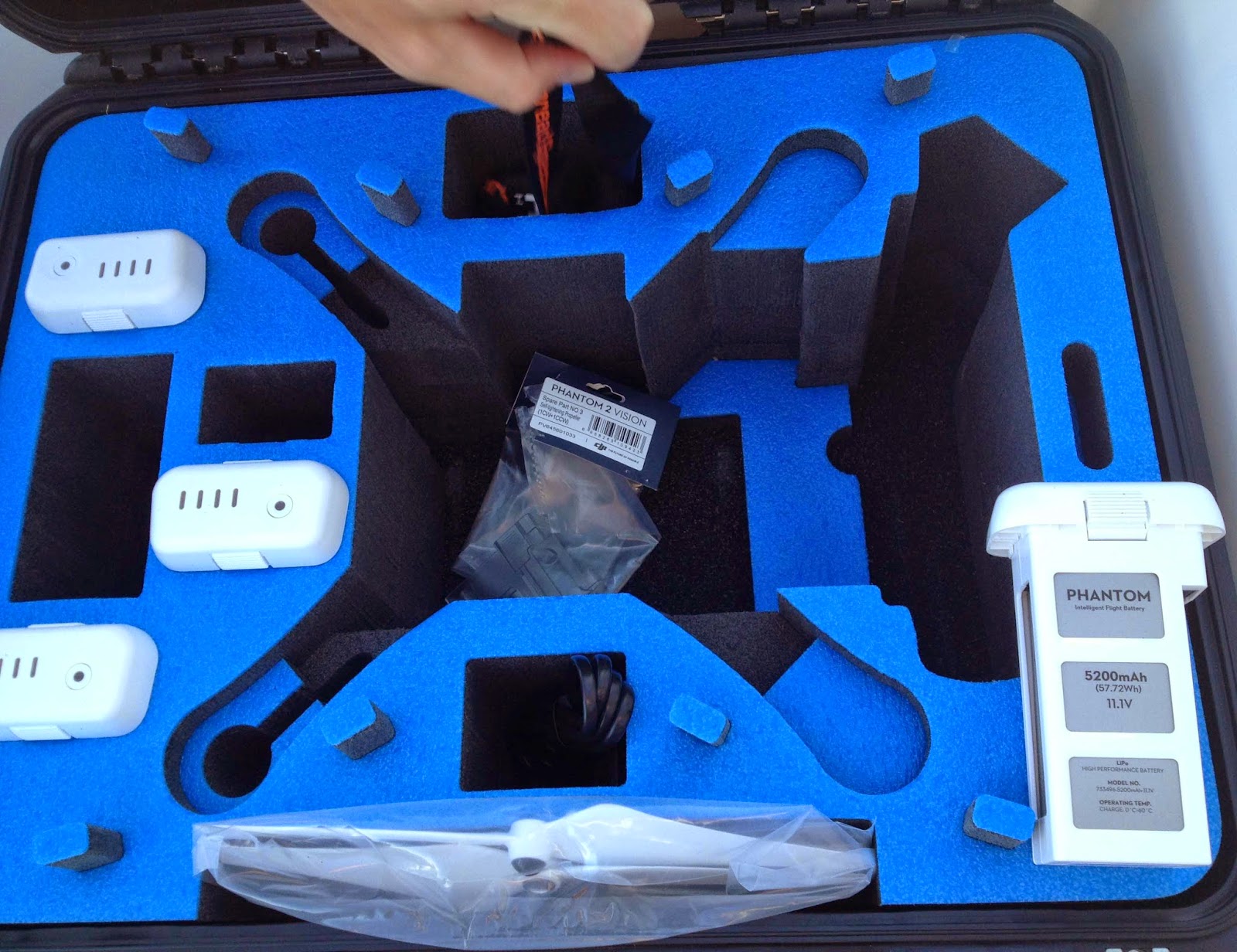 |
| the carrying case for DJI phantom, with the batteries topped off |
 |
| ready to launch |
Be a team
Have one guy, let's call him the drone pilot, be in charge of controlling the drone. Have the other guy, let's call him the captain, be in charge of managing the boat. The captain should also be ready with a giant fishing net. This is good to have nearby in case the drone almost returns to the boat, but actually returns a few feet from the boat. With a big net you can scoop the drone from the air just before it drops into the water.Or, if the sailing drone is fitted with some homemade water landing gear, you can scoop the drone from the water before its electronics are fried (skip to last 10 seconds of this video link to see the homemade landing gear in action).
 |
| fishing net ready for a quick 'drone overboard' situation |
Then, go fly the drone cautiously. Make a quick loop around the boat. Get comfortable, get confident.
 |
| my sailboat seen 40 feet above the starboard beam |
 |
| looking west to the Pacific Ocean (photo credit: Ryan Petterson) |
Practice retrievals in light conditions
Finally, practice retrieving the drone from your boat. Boats often have standing rigging, spars, antennae and fishing poles to negotiate.
First try to remove as many of these obstructions as possible. Then, launch and retrieve from the part of the boat that is furthest from these obstructions.
And, most importantly, keep a giant fishing net nearby. If the drone is just out of hands reach and the wind picks up. It's nice to reach for it with the net.
 |
| the captain secures the drone, while the drone pilot works the controller |
Here, I've cleared all halyards, lines and fishing poles from my cockpit to allow for an unobstructed landing space for my sailboat drone.
The only remaining obstruction was the backstay.
Okay, this is enough to think about for now. I will be posting the video from the Columbia River soon.
Stay tuned...
Stay tuned...





